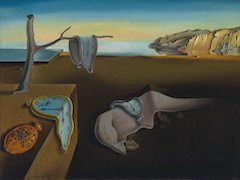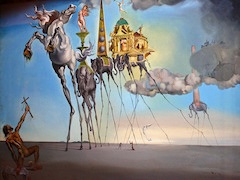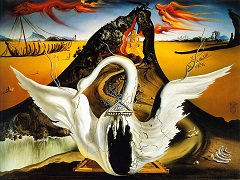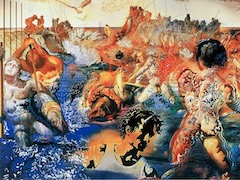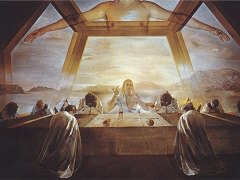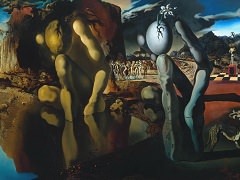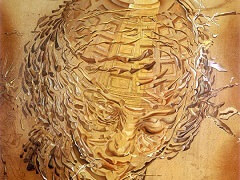Philosopher Illuminated by the Light of the Moon and the Setting Sun, 1939 by Salvador Dali
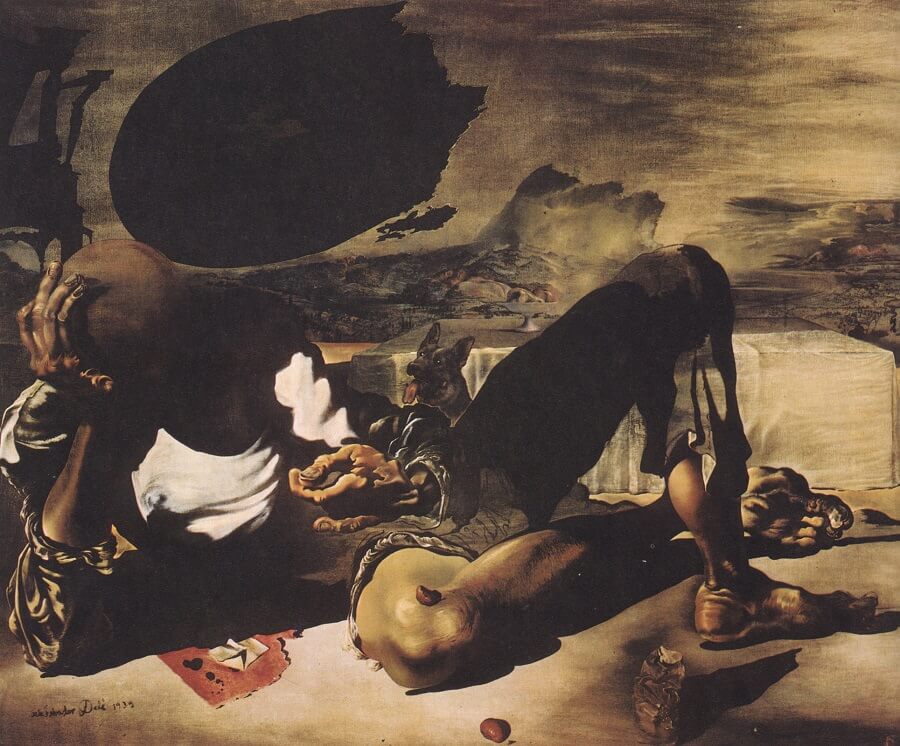
Possibly the darkest of Dali's paintings, Philosopher Illuminated was painted in 1939. The desolate philosopher lies sprawled on the ground, his head held in one hand. He is clothed in tattered shreds and his feet are bare. Against the twilight landscape, he appears to be immense. The little light that there is in the painting is coming from the right, where the sun is setting behind the mountains. The philosopher is in the dark, his face can not be seen and the viewer can not tell if he is reading the piece of paper that lies in front of him or whether he is merely contemplating his fingernails.
A huge oval moon hangs over the figure, seemingly about to crash into the ruins on the left. Thick black clouds cover the moon and it appears as if in eclipse. The egg-shape of this moon refers the viewer to Dali's use of huge eggs as a symbol of the birth of change, as can be seen in the painting Allegory of an American Christmas (1934). Here the dark moon, coupled with the despondent philosopher, suggests that an ominous change is about to occur.

